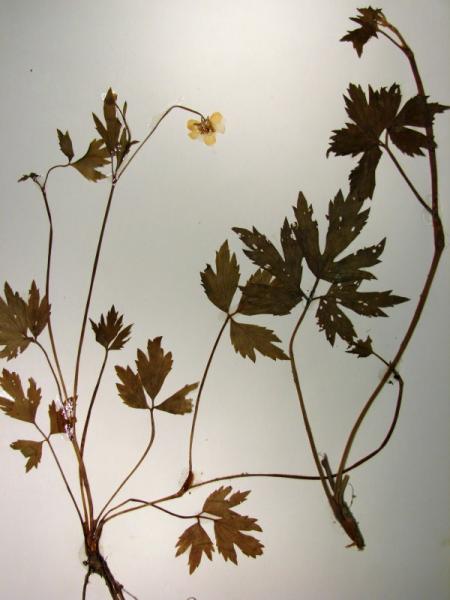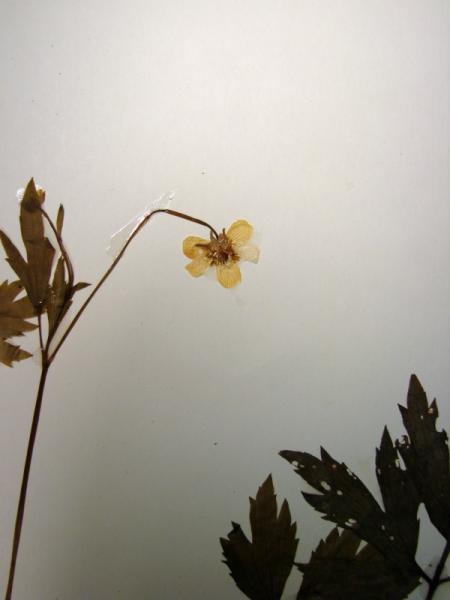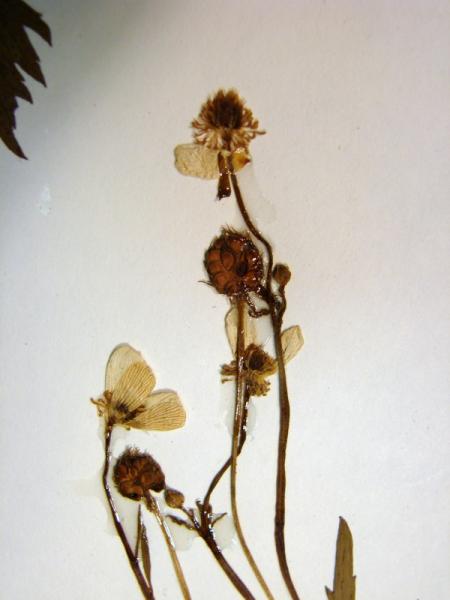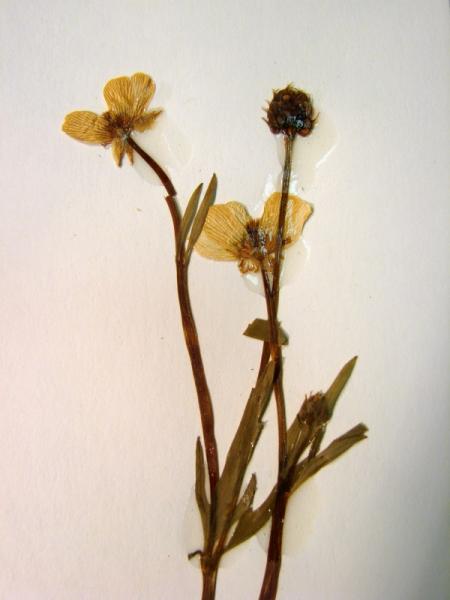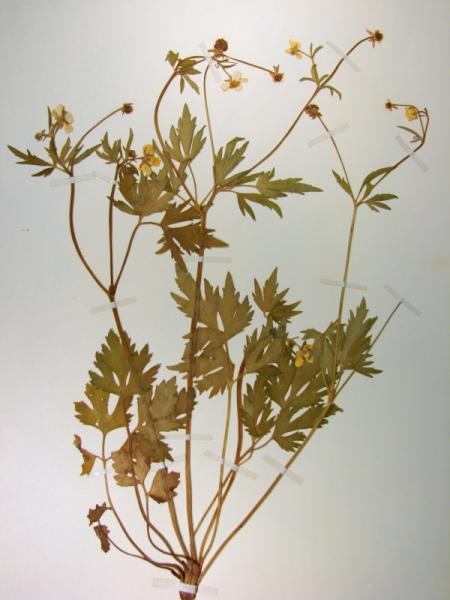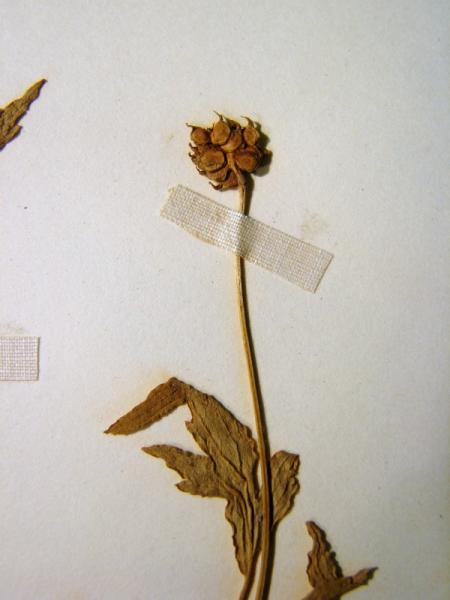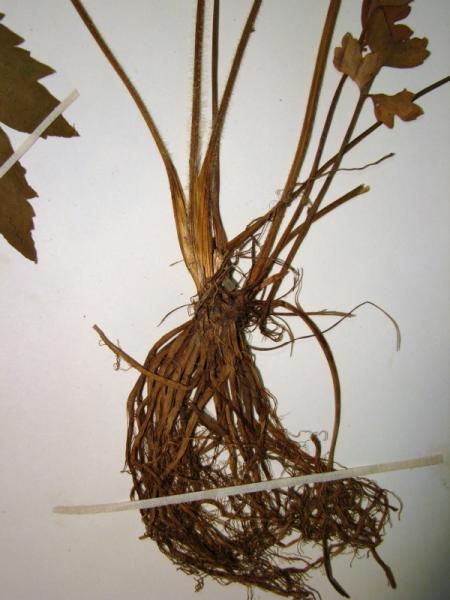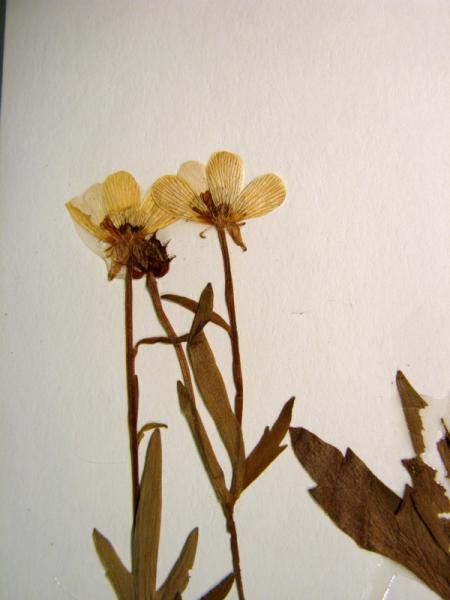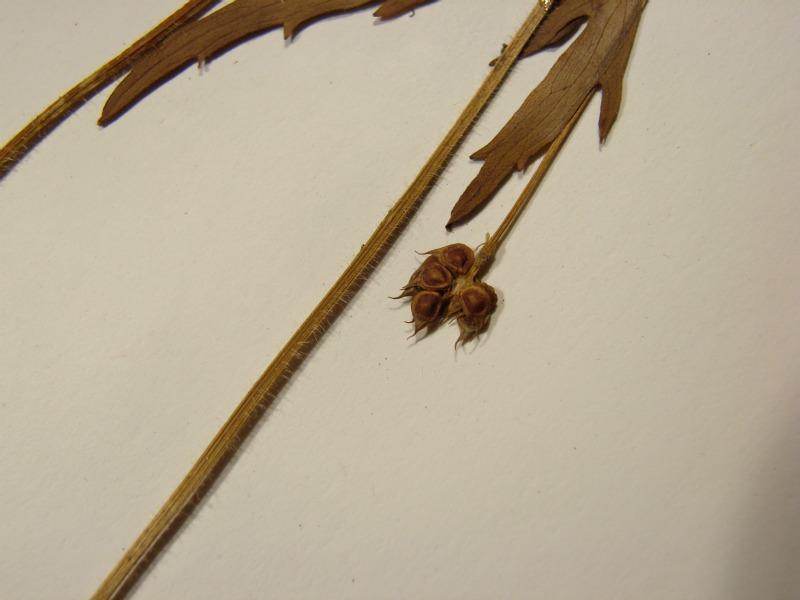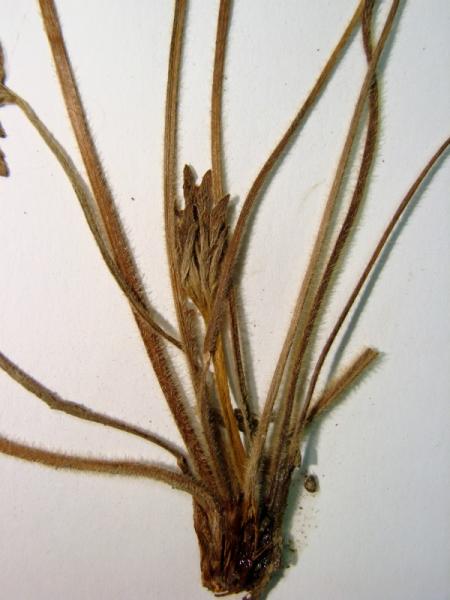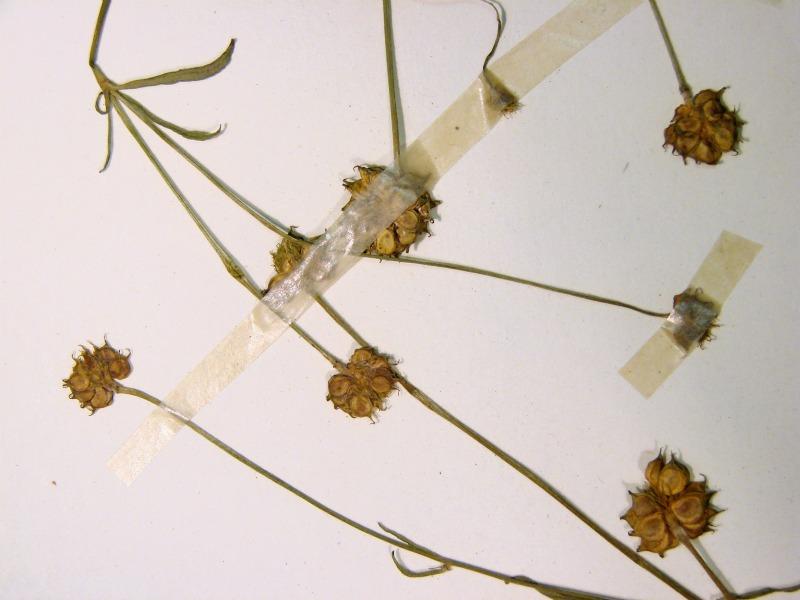Southern Swamp Buttercup
Ranunculus septentrionalis Poir.
- Class
- Dicotyledoneae (Dicots)
- Family
- Ranunculaceae (Buttercup Family)
- State Protection
- Endangered
Listed as Endangered by New York State: in imminent danger of extirpation in New York. For animals, taking, importation, transportation, or possession is prohibited, except under license or permit. For plants, removal or damage without the consent of the landowner is prohibited.
- Federal Protection
- Not Listed
- State Conservation Status Rank
- S1
Critically Imperiled in New York - Especially vulnerable to disappearing from New York due to extreme rarity or other factors; typically 5 or fewer populations or locations in New York, very few individuals, very restricted range, very few remaining acres (or miles of stream), and/or very steep declines.
- Global Conservation Status Rank
- G5T5
Secure globally - Both the species as a whole and the subspecies/variety are common in the world; widespread and abundant (but may be rare in some parts of its range).
Summary
Did you know?
This species is probably overlooked in the field because of the subtle differences between it and the other two varieties of Ranunculus hispidus which are very common in the state.
State Ranking Justification
There are three existing populations although one of them has not been checked since 1982 and its location is not very specific. The other two existing populations have only three or four plants each and grow in dynamic habitats which could threaten plants. There are only four historical records and only one has a good chance of being rediscovered.
Short-term Trends
None of the existing populations has been rechecked in recent years so short-term trends are unknown.
Long-term Trends
This species has always been rare in New York with only four historical records but none of these have been relocated. This decline has been offset somewhat by the discovery of three new but small populations.
Conservation and Management
Threats
Plants may be affected by fluctuations in river water levels or by erosion of the soil at the edge of a marsh.
Conservation Strategies and Management Practices
Establish sufficient buffers around populations to preserve the undisturbed aspect and hydrology of their habitat. Protect shoreline habitat from human disturbance and excessive erosion.
Research Needs
Herbarium studies are needed to determine if specimens of this species were originally identified as closely related common varieties. More field studies are needed to obtain a better search image to distinguish this variety from the common varieties.
Habitat
Habitat
The three confirmed, existing locations of Ranunculus hispidus var.nitidus in New York are each from along the edges of streams or reservoirs. The soil substrate at these sites is soft and mucky. More information on the habitat preferences of this variety in New York is needed, as there are historical records with no habitat data from widespread locations across the state. (New York Natural Heritage Program 2007). Low woods, thickets and shores (Fernald 1970). Wet woods, river bottoms, swamps and ditches (Mitchell & Dean 1982).
Associated Ecological Communities
- Ditch/artificial intermittent stream*
The aquatic community of an artificial waterway constructed for drainage or irrigation of adjacent lands. Water levels either fluctuate in response to variations in precipitation and groundwater levels, or water levels are artificially controlled.
- Reservoir/artificial impoundment*
The aquatic community of an artificial lake created by the impoundment of a river with a dam. Reservoirs are constructed to collect water for municipal and/or agricultural water use, to provide hydroelectric power, and to improve opportunities for recreational activities (e.g., boating, swimming), and development.
- Shallow emergent marsh
(guide)
A marsh meadow community that occurs on soils that are permanently saturated and seasonally flooded. This marsh is better drained than a deep emergent marsh; water depths may range from 6 in to 3.3 ft (15 cm to 1 m) during flood stages, but the water level usually drops by mid to late summer and the soil is exposed during an average year.
- Shoreline outcrop
(guide)
A community that occurs along the shores of lakes and streams on outcrops of non-calcareous rocks such as anorthosite, granite, quartzite, sandstone, gneiss, or schist. The shoreline is exposed to wave action and ice scour. The vegetation is sparse; most plants are rooted in rock crevices.
* probable association but not confirmed.
Associated Species
- Carex
- Juncus
- Ludwigia palustris (water-purslane)
- Triadenum virginicum
Range
New York State Distribution
This variety of swamp buttercup has been collected from scattered locations throughout New York, though it is currently confirmed to be extant only in Columbia and Sullivan Counties.
Global Distribution
Ranunculus hispidus var. hispidus reaches the northeastern limit of its range in New York State, and ranges south to northern Florida, the Gulf states and East Texas, and west to Minnesota and the eastern edge of the Great Plains.
Identification Comments
General Description
Ranunculus hispidus var. nitidus is a perennial wildflower species, growing from 1.5 to 9 dm tall from thick, fibrous roots. The stems are prostrate at the base, and sometimes root at the nodes, but are erect at the tips. The leaves are either 3-lobed or palmately divided into 3 leaflets, these in turn are toothed or deeply cleft. The petals are the familiar, shiny yellow of the common buttercup species, with petals 8-12 mm long. The stems and sepals are both covered with silky white hairs. The sepals reflex (turn down) as the fruit matures. The fruit develop on cone-shaped receptacles, each producing 10-20 broad-margined achenes.
Best Life Stage for Proper Identification
Plants with both leafy stems and intact fruit are best for identification.
Similar Species
Ranunculus hispidus var. hispidus has erect stems, not rooting at the nodes, with the sepals usually spreading, not reflexed, and it is a plant of dry habitats. Ranunculus hispidus var. caricetorum has sepals that are either spreading or reflexed from the base (var. nitidus sepals are reflexed from 1 mm above the base), and the margins of the achenes are .1 to .2 mm broad (var. nitidus has achenes with margins .4 to 1.2 mm broad).
Ranunculus fascicularis has principal leaves that are mostly longer than wide, a cone-shaped mature receptacle (R. hispidus var. nitidus has an elliptical receptacle), tuberous roots, and it is a plant of dry habitats.
Best Time to See
The flowers emerge in May to early June, and the fruits mature in July.
- Flowering
- Fruiting
The time of year you would expect to find Southern Swamp Buttercup flowering and fruiting in New York.
Southern Swamp Buttercup Images
Taxonomy
Southern Swamp Buttercup
Ranunculus septentrionalis Poir.
- Kingdom Plantae
- Phylum Anthophyta
- Class Dicotyledoneae
(Dicots)
- Order Ranunculales
- Family Ranunculaceae (Buttercup Family)
- Order Ranunculales
- Class Dicotyledoneae
(Dicots)
- Phylum Anthophyta
Synonyms
- Ranunculus carolinianus DC.
- Ranunculus hispidus var. nitidus (Chapman) T. Duncan
Additional Resources
Best Identification Reference
Gleason, Henry A. and A. Cronquist. 1991. Manual of Vascular Plants of Northeastern United States and Adjacent Canada. The New York Botanical Garden, Bronx, New York. 910 pp.
Other References
Fernald, M.L. 1950. Gray's manual of botany. 8th edition. D. Van Nostrand, New York. 1632 pp.
Flora of North America Editorial Committee. 1997. Flora of North America, North of Mexico. Volume 3. Magnoliophyta: Magnoliidae and Hamamelidae.
Holmgren, Noel. 1998. The Illustrated Companion to Gleason and Cronquist's Manual. Illustrations of the Vascular Plants of Northeastern United States and Adjacent Canada. The New York Botanical Garden, Bronx, New York.
Mitchell, Richard S. and Kenneth J. Dean. 1982. Ranunculaceae (crowfoot family) of New York State Bulletin 446 New York State Museum State Education Department Albany, NY 12230.
New York Natural Heritage Program. 2010. Biotics database. New York Natural Heritage Program. New York State Department of Environmental Conservation. Albany, NY.
New York Natural Heritage Program. 2024. New York Natural Heritage Program Databases. Albany, NY.
Rhoads, Ann F. and Timothy A. Block. 2000. The Plants of Pennsylvania, an Illustrated Manual. University of Pennsylvania Press, Philadelphia, PA.
Voss, E.G. 1985. Michigan Flora. Part II. Dicots (Saururaceae - Cornaceae). Cranbrook Institute of Science and University of Michigan Herbarium. Ann Arbor, Michigan. 724 pp.
Weldy, T. and D. Werier. 2010. New York flora atlas. [S.M. Landry, K.N. Campbell, and L.D. Mabe (original application development), Florida Center for Community Design and Research http://www.fccdr.usf.edu/. University of South Florida http://www.usf.edu/]. New York Flora Association http://newyork.plantatlas.usf.edu/, Albany, New York
Weldy, Troy W. and David Werier. 2005. New York Flora Atlas. [S.M. Landry, K.N. Campbell, and L.D. Mabe (original application development), Florida Center for Community Design and Research. University of South Florida]. New York Flora Association, Albany, NY. Available on the web at (http://newyork.plantatlas.usf.edu/).
Links
About This Guide
Information for this guide was last updated on: December 29, 2008
Please cite this page as:
New York Natural Heritage Program. 2024.
Online Conservation Guide for
Ranunculus septentrionalis.
Available from: https://guides.nynhp.org/swamp-buttercup/.
Accessed July 26, 2024.
